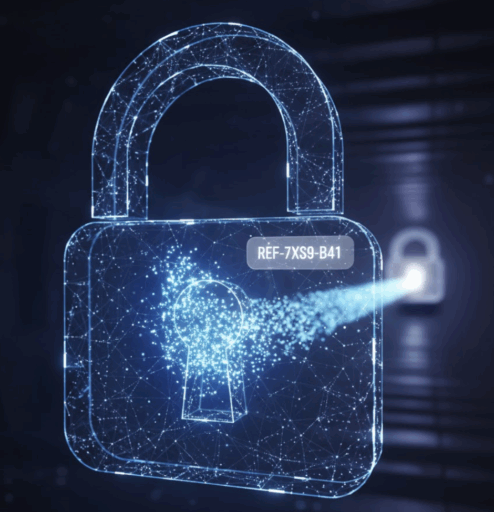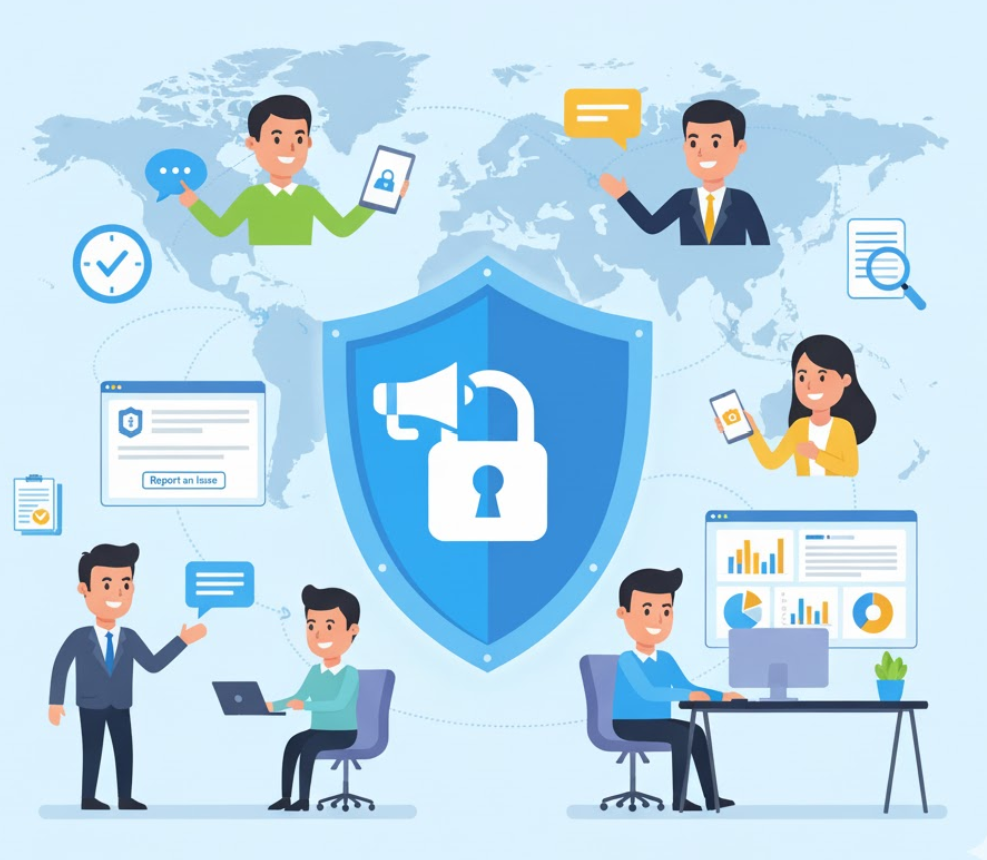
In today’s workplace, robust compliance and ethics programs are essential for building trust and safeguarding organizations from crippling risks. Yet, one of the biggest threat to these programs is often the simplest: silence. Employees who witness misconduct frequently hesitate to report it, held back by the pervasive fear of professional reprisal.
One of the most powerful tools designed to break this silence and protect organizations from within is anonymous reporting—a mechanism that allows employees to share concerns without revealing their identity. While widely recognized, anonymous reporting is often misunderstood. Some employees worry that “anonymous” isn’t truly anonymous, while others question its effectiveness. This article demystifies how anonymous reporting works, addresses common misconceptions, and explains why this system is an indispensable element of ethical governance that employees profoundly value.
What is Truly Anonymous Reporting?
Anonymous reporting is a process that enables individuals to report misconduct, fraud, harassment, safety hazards, or other serious concerns without disclosing their name, contact information, or any other identifying data. The goal is simple yet critical: to create a safe environment where employees feel empowered to speak up without the fear of negative consequences.
It is crucial to distinguish true anonymity from confidentiality:
- Confidential Reporting: The reporter’s identity is known to a limited group (e.g., the Compliance Officer or investigator), but it is legally and ethically protected from wider disclosure.
- Anonymous Reporting: The reporter’s identity is unknown to the organization and the service provider managing the report intake. This is the highest level of protection, directly countering the employee’s fear of retaliation.
Reputable organizations achieve this level of protection by partnering with independent, third-party providers, such as Red Flag Reporting. The independence of such providers is critical, as it assures employees their information is handled neutrally, eliminating concerns about internal conflicts of interest or bias that can erode trust.
The Mechanics of Anonymous Reporting: A Technical Safety Net
Modern anonymous reporting systems are technologically advanced to protect the reporter while maintaining the integrity of the investigation. The design is a sophisticated safety net, built to safeguard identity at every turn.
Organizations typically provide multiple secure channels:
- Dedicated Phone Hotlines: Staffed by trained, professional intake specialists who record the details of the concern without requesting or recording caller ID or other traceable personal data.
- Web-Based Portals and Mobile Apps: Secure online forms that utilize advanced encryption and technical measures to strip identifying metadata, such as IP addresses, from the submission.
The true innovation in these systems, which addresses the main investigative hurdle, is Two-Way Anonymous Communication:
- Unique Case Number: When an employee submits a report (either online or by phone), they are given a secure, unique case number and password.
- Secure Dialogue: This code allows the anonymous reporter to log back into the system later. The investigator can post specific, clarifying questions—such as, “Can you provide the date the financial documents were altered?”—and the reporter can respond at their convenience. This essential dialogue maintains anonymity while allowing the compliance team to gather the details necessary for a comprehensive and fact-based investigation.
By relying on the unique case number and secure platform, the compliance team can obtain the evidence needed to act, without ever knowing or compromising the source.
Clearing Up Misconceptions About Anonymous Reporting
Despite its technical safeguards and ethical underpinnings, some persistent myths about anonymous reporting remain. Disarming these myths is vital for building a robust “speak-up” culture.
| Misconception | Reality and Evidence |
| Myth 1: “Even if I don’t give my name, the report is still traceable through IP addresses, device information, or cookies.” | Reality: The System is Designed to Eliminate the Digital Footprint for the Reporter. |
| Myth 2: “Anonymous reports aren’t taken seriously.” | Reality: Most compliance teams treat anonymous reports with the same, or even greater, urgency as named reports. The credibility of a report depends solely on the details and evidence provided—not on the attachment of a name. Ignoring a verifiable anonymous tip is a profound failure of governance. |
| Myth 3: “Anonymous reporting encourages false claims.” | Reality: Experience consistently demonstrates that the number of malicious or false reports is statistically small. Employees value these systems too highly to misuse them; they provide a crucial, safe way to raise legitimate, significant concerns, especially in environments where fear of retaliation is high. |
| Myth 4: “It’s impossible to follow up on the details.” | Reality: The introduction of two-way communication systems, facilitated by the unique case number, directly counters this operational concern, allowing investigators to seek essential details without breaching the reporter’s anonymity. |
Why Employees Value Anonymous Reporting
Employees consistently rank the availability of an effective, trustworthy anonymous reporting channel as one of the most important features of an ethics program. The value proposition centers on profound psychological and professional security.
- The Shield Against Retaliation
As noted, fear of retaliation is the number one reason employees stay silent. Retaliation takes many forms—from job loss or demotion to being sidelined or ostracized. Anonymous reporting removes this immense personal risk calculation entirely. It serves as a shield, empowering the individual to uphold the company’s ethics without jeopardizing their career or well-being.
- Promoting Psychological Safety and Trust
Knowing that there is a secure, independent channel available fosters trust in the organization’s commitment to fairness. This psychological safety promotes a more open and cohesive work environment. When employees see that the system is used effectively and that action is taken, it validates their decision to speak up and reinforces a shared commitment to organizational integrity.
- Empowerment in Imbalanced Power Dynamics
In situations involving senior leadership, high-value individuals, or complex power dynamics (such as reporting harassment by a direct manager), direct confrontation or even confidential reporting can feel impossible. Anonymous reporting is the only viable voice for employees in these circumstances, empowering them to ensure justice is served without exposing themselves to an unequal fight.
Anonymous Reporting and Compliance: A Strategic Advantage
For organizations, anonymous reporting is much more than an employee benefit; it is a fundamental compliance necessity and a strategic asset.
Compliance and Accountability: Regulators, including the SEC, OSHA, and global bodies, increasingly emphasize the importance of effective whistleblower programs. Failure to provide a trustworthy channel can be viewed as a lack of due diligence, leading to massive fines, litigation costs, and severe legal exposure.
Early Detection and Risk Mitigation: Anonymous reporting acts as a vital early warning system. Frontline employees are often the first to see the small signs of fraud, safety failures, or ethical breaches. By capturing these issues early, the organization can intervene before they escalate into major financial losses, legal crises, or widespread reputational damage. In this sense, the investment in a high-quality reporting system is a cost-effective form of organizational insurance and a powerful strategic advantage.
By demystifying how anonymous reporting works and ensuring transparency about its technical safeguards, companies can build a culture where integrity is valued, and everyone feels safe to speak up—a practice that protects people, reputation, and profitability.
Learn how we can help you to affordably implement an anonymous reporting platform for your organization.
Reach Us
Red Flag Reporting
P.O. Box 4230, Akron, Ohio 44321
Tel: 877-676-6551
Fax: 330-572-8146



